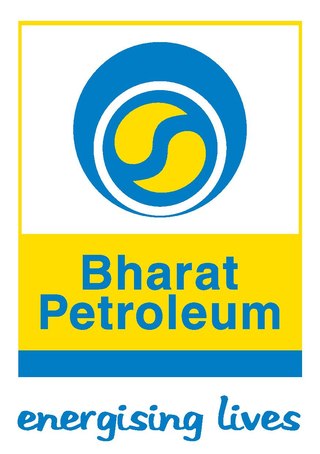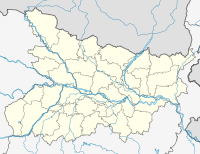
Stanlow Refinery is an oil refinery owned by Essar Energy in Ellesmere Port, North West England. Until 2011 it was owned by Shell UK. The refinery is situated on the south bank of the Manchester Ship Canal, which is used to transport seaborne oil for refining and chemicals for Essar and Shell.

Guwahati Refinery was set up at Noonmati in Guwahati on 1 January 1962. Guwahati Refinery is the first Public Sector refinery of India and belongs to Indian Oil Corporation Limited. The refinery was inaugurated by Late Pandit Jawahar Lal Nehru, the first Prime Minister of independent India. The refinery was built with Romanian Collaboration and has a capacity of 1.0 million metric tonnes per annum. This refinery process crude oil from Upper Assam Oil Fields, India and helps cater energy need of the region. Major Products of this refinery are
- LPG,
- Motor Spirit (Petrol),
- Aviation Turbine Fuel (ATF),
- Kerosene,
- High Speed Diesel,
- Light Diesel Oil and
- Raw Petroleum Coke.
The Gujarat Refinery is an oil refinery located at Koyali, Vadodara District in Gujarat, Western India. It is the third largest refinery owned by Indian Oil Corporation after Paradip and Panipat Refinery. The refinery is currently under projected expansion to 18 million tonnes per year.

Haldia Refinery is an oil refinery operated by Indian Oil Corporation, located in Haldia city in the state of West Bengal. This refinery has a capacity of 8 million tonnes per year. This refinery was commissioned in 1975 and is situated 136 km from Kolkata, at the junction of Haldi and Hooghly River. This refinery can produce various fuel products like LPG, Naphtha, Motor Spirit (Petrol), Mineral Turpentine Oil, Superior Kerosene, Aviation Turbine Fuel, High Speed Diesel, Jute Batching Oil.
The Mathura Refinery, owned by Indian Oil Corporation, is the sixth refinery of IndianOil located in Mathura, Uttar Pradesh, India. The refinery processes low sulphur crude from Bombay High, imported low sulphur crude from Nigeria, and high sulphur crude from the Middle East.

Panipat Refinery is an oil refinery located in Baholi, Panipat, Haryana, India. It was set up in 1998. Panipat Refinery is the seventh refinery belonging to Indian Oil Corporation Limited. It is one of South Asia's largest integrated petrochemicals plants. Panipat Refinery meets the demand of petroleum products of Haryana and of the entire North-West Region including Punjab, J&K, Himachal, Chandigarh, Uttaranchal state and part of Rajasthan & Delhi. It stands by Indian Oil vision to become a major, diversified, transnational, integrated energy company, with national leadership and a strong environment conscience, playing national role in oil security and public distribution. Bedgsing younger of the Indian Oil refineries it houses latest refining technologies from Axens; France, Haldor-Topsoe; Denmark, UOP; USA, Stone & Webster; USA and Delta Hudson-Canada, Dupont, USA and ABB Luumas. The original cost of the refinery's construction was Rs 3868 Crores. It commenced with a capacity of 6 million tonnes per year and has been recently augmented to 12 million tonnes per year at a cost of Rs 4165 Crores. The refinery is designed to handle both indigenous and imported crudes. It receives crude through the Salaya Mathura Pipeline which also supplies crude to Mathura and Baroda refineries.

Visakhapatnam Refinery, is one of the two oil refineries of HPCL in India, the other being Mumbai Refinery. This was one of the first major industries of Visakhapatnam and first oil refinery on the East Coast. After the nationalisation, HPCL has transformed itself into a mega Public Sector Undertaking and it is second largest integrated oil company in India.

Chennai Petroleum Corporation Limited (CPCL), formerly known as Madras Refineries Limited (MRL), is a subsidiary of Indian Oil Corporation Limited which is under the ownership of Ministry of Petroleum and Natural Gas of the Government of India. It is headquartered in Chennai, India. It was formed as a joint venture in 1965 between the Government of India (GOI), Amoco and National Iranian Oil Company (NIOC), having a shareholding in the ratio 74%: 13%: 13% respectively. From the grassroots stage CPCL Refinery was set up with an installed capacity of 2.5 million tonnes per year in a record time of 27 months at a cost of ₹430 million (US$5.4 million) without any time or cost overrun.
The Vadinar refinery is an oil refinery at Vadinar, Gujarat, India. It is owned and operated by Nayara Energy Limited, in which Rosneft owns a 49.13% stake. The refinery is India's second largest single-location refinery, with an annual capacity of 20 million tonnes and a complexity of 11.8, which also makes it among the world's most complex refineries.

Kochi Refinery Limited (KRL) is a crude oil refinery in the city of Kochi in Kerala, India. It is the largest public sector refinery in India with a production capacity of 15.5 million tonnes per year. Formerly known as Cochin Refineries Limited and later renamed as Kochi Refineries Limited, it was acquired by Bharat Petroleum Corporation Limited in the year 2006. The refinery is situated at Ambalamugal, around 12 km (7.5 mi) east of the city centre.

Bongaigaon Refinery is an oil refinery and petrochemical complex located in the city of Bongaigaon in the administrative district of Chirang in Assam. It was announced in 1969 and construction began in 1972.

Bharat Petroleum Corporation Limited (BPCL) is an Indian public sector undertaking (PSU) under the ownership of the Ministry of Petroleum and Natural Gas,Government of India. It operates three refineries in Bina, Kochi and Mumbai. BPCL is India's second-largest government-owned downstream oil producer, whose operations are overseen by the Ministry of Petroleum and Natural Gas. BPCL was ranked 309th on the Fortune list of the world's biggest PSUs in 2020, and 792nd on Forbes's "Global 2000" list in 2021.

Hindustan Petroleum Corporation Limited (HPCL) is an Indian public sector undertaking in petroleum and natural gas industry, headquartered in Mumbai, and a subsidiary of the Oil and Natural Gas Corporation (ONGC), which is owned by the Ministry of Petroleum and Natural Gas, Government of India.

Coryton Refinery was an oil refinery in Essex, England, on the estuary of the River Thames 28 miles (45 km) from central London, between Shell Haven Creek and Hole Haven Creek, which separates Canvey Island from the mainland.

GAIL (India) Limited is a central public sector undertaking under the ownership of the Ministry of Petroleum and Natural Gas, Government of India. It has the following business segments: natural gas, liquid hydrocarbon, liquefied petroleum gas transmission, petrochemical, city gas distribution, renewable Energy including Solar & Wind, exploration and production, Petrochemicals, GAILTEL and electricity generation. GAIL was given the MahaRatna status on 1 Feb 2013 by the Government of India. Only 11 other Public Sector Undertakings (PSUs) enjoy this coveted status amongst all Central PSUs.

Ceylon Petroleum Corporation, commonly known as CEYPETCO (CPC), is a Sri Lankan oil and gas company. Established in 1962 and wholly owned by the Government of Sri Lanka, it is largest oil company in the Sri Lanka. It was formed in 1961 by nationalisation and expropriation of all private oil companies in Sri Lanka at the time of its formation. It is under the ownership of Ministry of Petroleum Resources Development headquartered in Colombo. It is the largest government owned company in the country, with an operational profit of Rs. 33.9 billion for the financial year 2020.
Paradip Refinery is an oil refinery set up by Indian Oil Corporation in Paradip city in the state of Odisha. It was commissioned in 2016 with an installed capacity of 15 million tonnes per year. This refinery is spread over approximately 3,345 acres of land and is situated approximately 5 km southwest from the Paradip Port.

Indian Oil Corporation Limited is an Indian multinational oil and gas company under the ownership of the Ministry of Petroleum and Natural Gas, Government of India. It is headquartered in New Delhi. It is a public sector undertaking whose operations are overseen by the Ministry of Petroleum and Natural Gas. Indian Oil is ranked 94th on the Fortune Global 500 list of the world's biggest corporations as of 2022. It is the largest government owned oil producer in the country both in terms of capacity and revenue.It has consolidated refining capacity of 80.55MMTPA which it intends to increase to 107MMTPA by 2024-25. As of 31 March 2021, Indian Oil's employee strength is 31,648, out of which 17,762 are executives and 13,876 non-executives, while 2,776 are women, comprising 8.77% of the total workforce.
Urja Ganga gas pipeline project was launched by Prime Minister Narendra Modi in his constituency Varanasi, Uttar Pradesh. Also referred to as the Jagdishpur-Haldia Bokaro-Dhamra Natural Gas Pipeline (JHBDPL) project, the project is of an estimated length of 2540 km which is under construction from the states of Uttar Pradesh to Odisha. A paper titled Subsidies for Whom in The Economic and Political Weekly (EPW), published in 2012, shows that only 18 percent households consume LPG as cooking fuel and the rest use other ways of cooking like wood, kerosene, dung cakes etc which is harmful to their health.
The petroleum industry in India dates back to 1889 when the first oil deposits in the country were discovered near the town of Digboi in the state of Assam. The natural gas industry in India began in the 1960s with the discovery of gas fields in Assam and Maharashtra. As on 31 March 2018, India had estimated crude oil reserves of 594.49 million metric tonnes (Mt) and natural gas reserves of 1339.57 billion cubic metres of natural gas (BCM).














